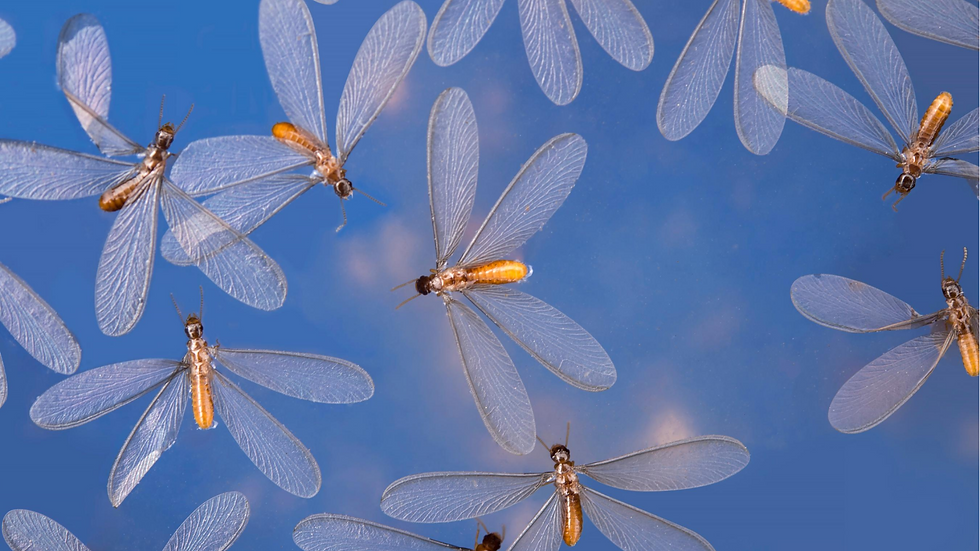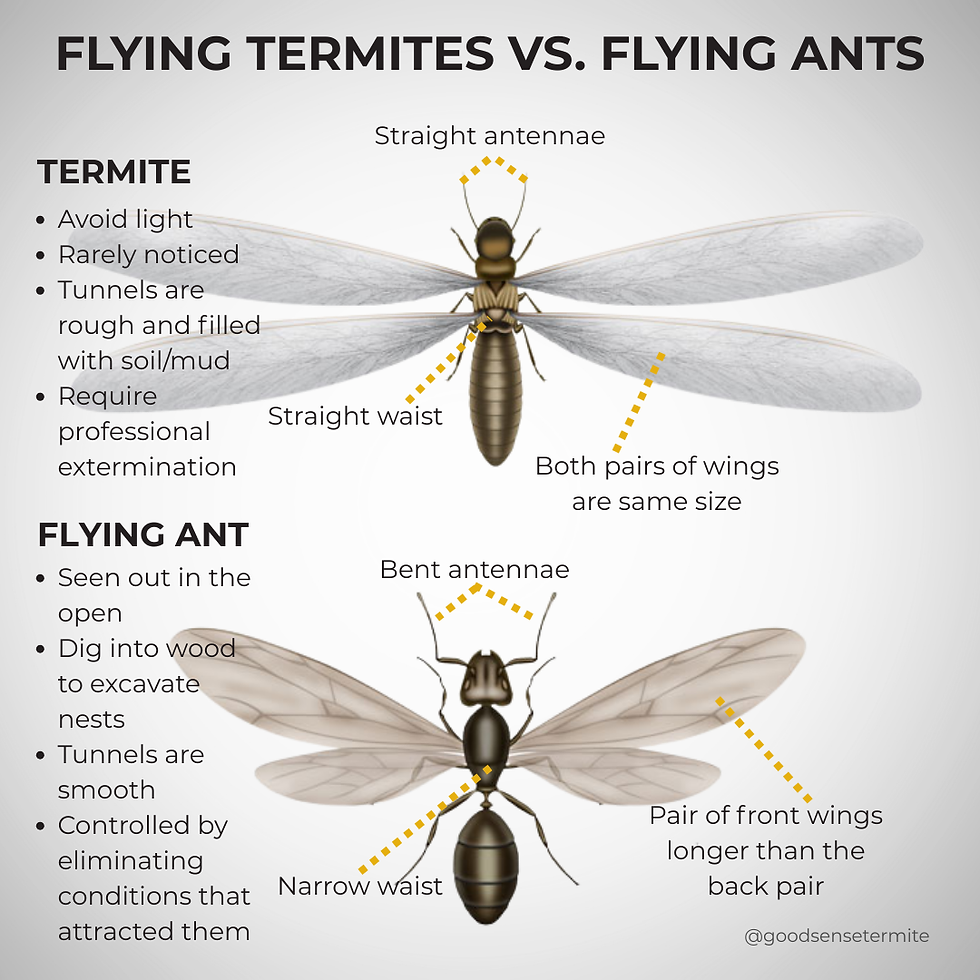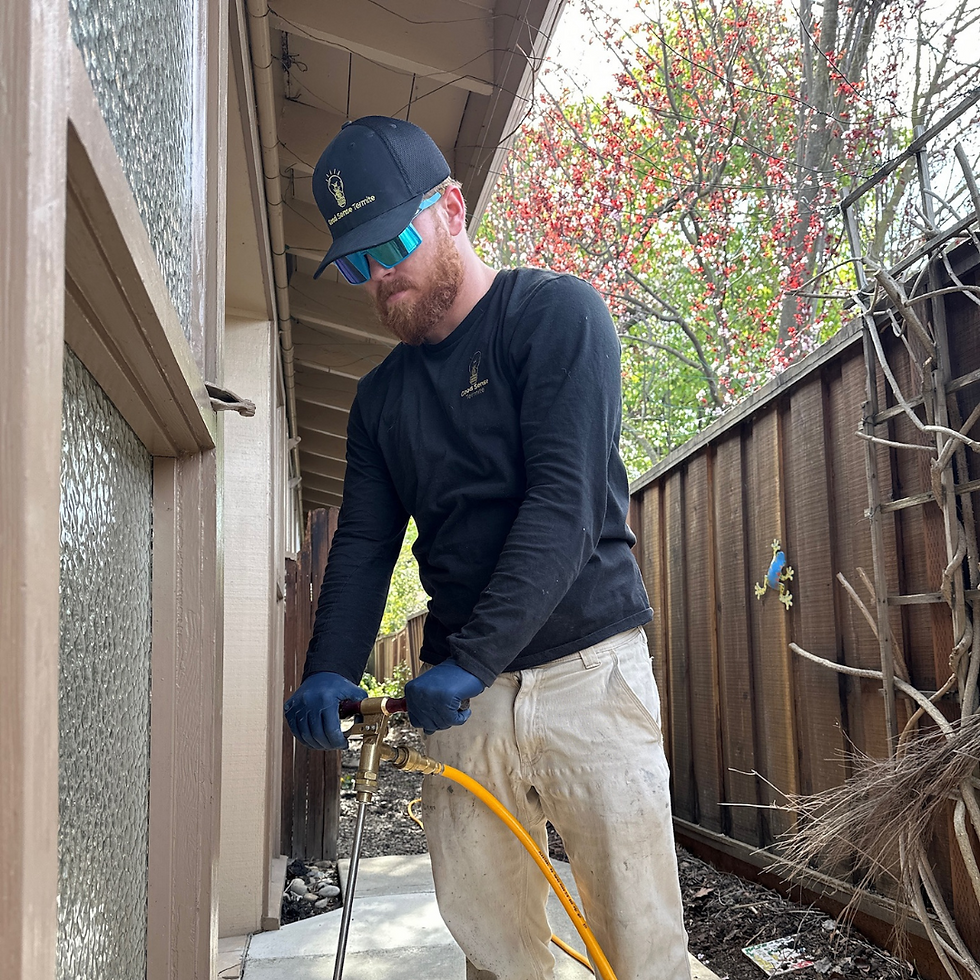Why Termite Swarms in San Jose Are a Bigger Warning Than You Think
- Jameson Elam

- Aug 14
- 3 min read

About the Author: Jameson Elam is the owner and operator of Good Sense Termite, serving Alameda, Santa Clara, San Mateo, and Santa Cruz counties. With over 14 years of hands-on experience in the termite control industry, Jameson specializes in thorough inspections, accurate diagnostics, and long-term solutions tailored to California homes. His deep knowledge of local termite behavior and building structures has made Good Sense Termite a trusted name for homeowners and real estate professionals alike.
Swarming Termites Are Your Home’s Early Alarm
Every spring and summer, San Jose homeowners notice flying termites—often mistaken for flying ants—emerging in sudden bursts. These swarms are not random. They are a major warning sign that a termite colony is nearby, and possibly inside your home.
Ignoring swarming termites can turn a preventable problem into a costly repair.
Why Termites Swarm
Swarming is part of a termite colony’s life cycle:
Mature colonies produce winged termites called alates.
Alates swarm to mate and start new colonies.
Swarms occur near active infestations, signaling a colony is established.
In San Jose, subterranean termite swarms are common in spring after rain, while drywood termite swarms can appear in late summer or fall.
The Bigger Warning: Swarms Signal Hidden Activity
Seeing even a few swarming termites means:
A colony is mature and nearby, often within 50–100 feet.
Structural wood may already be compromised, especially if swarms are inside.
Other colonies may exist that are not yet visible.
Homeowners often think swarms are isolated events, but in reality, they indicate your home or your neighbor’s home is feeding a colony.

Key Differences Between Termite and Ant Swarms
Misidentifying swarming insects is a common mistake. Termites and ants look similar but have clear differences:
Termites: Straight antennae, uniform wings, thick waists
Ants: Bent antennae, uneven wings, narrow waists
If you see swarming termites indoors, they likely emerged from inside your walls, attic, or crawl space.
What to Do If You See a Swarm
Document and Identify
Take photos or collect a sample for a professional to confirm species.
Inspect Your Home
Check window sills, attics, crawl spaces, and wooden trim for signs of activity.
Call for a Professional Inspection
Swarms are a red flag that warrants immediate expert attention.

Good Sense Termite: Local Experts in Swarm Response
With over 14 years of experience in San Jose, we know:
Where swarms usually originate in local neighborhoods
Seasonal patterns for both drywood and subterranean species
How to find and treat colonies before they cause major damage
We provide free inspections, detailed risk assessments, and custom treatment and warranty plans for true peace of mind.
FAQ: Swarming Termites in San Jose
Do swarms always mean I have termites in my house?
Not always, but swarms within 50–100 feet are a strong indicator that your home is at risk.
Can I treat swarms myself?
Spraying swarms only kills a fraction of the colony. Professional inspection is critical.
How fast should I act?
Immediately. Swarms indicate a mature colony, and delaying inspection can lead to structural damage.
Take Action Before Swarms Turn Into Damage
If you’ve seen swarming termites in San Jose, don’t wait. Schedule your free inspection with Good Sense Termite today and protect your home before the next swarm season.




Comments